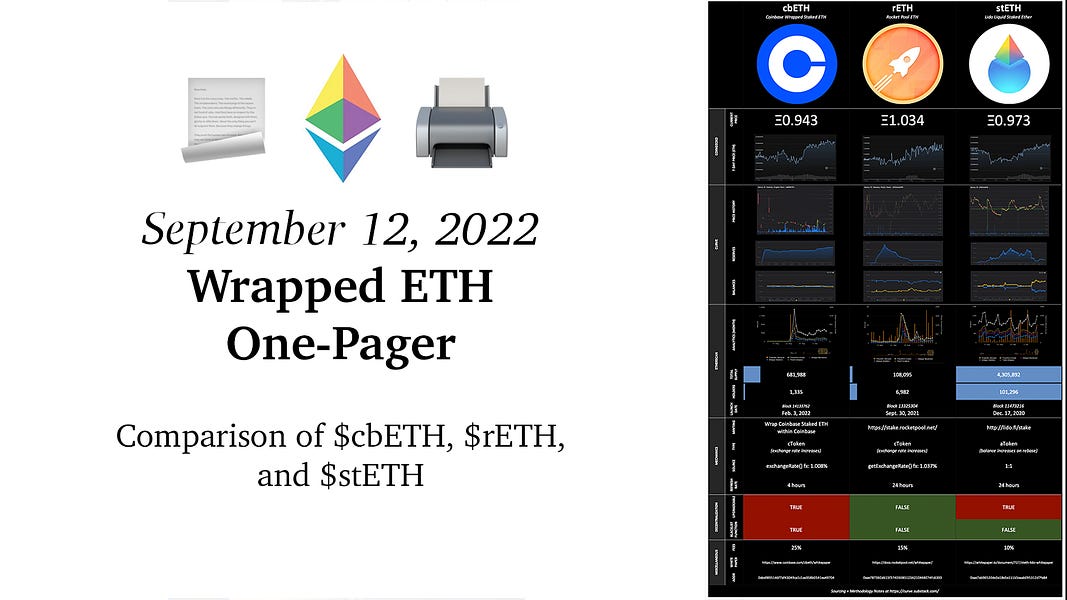This is going to be a short post. Mostly, for me, so I can remember this interesting chart I've seen.
What is Ethereum Staking?
Now that "the merge" has happened, Ethereum has moved from Proof of Work (PoW) to Proof of Stake (PoS). To say this move has been controversial is an understatement. However, as much as it's been controversial it's been an astounding technical accomplishment.
The controversy comes from the key-most thing about each PoW and PoS.
PoW requires a spending of computation (energy) to validate the network. PoS only requires a large enough commitment to the network in the form of 32 ETH per validator node. One one hand, PoW takes more energy, on the other there is an opinion (I don't know enough to have an opinion here) that PoW makes for a more egalitarian and democratic money. Then there's this:
Increasingly bearish on Proof of Stake, on most L1s that are just starting out.
— Pat Manfra (@PatrickManfra) September 21, 2022
Creating more assets where the cost of production is literally $0, for the most part, means that asset is worth $0.
VCs are propping up market caps that should not exist.
Ethereum staking is attaching 32 ETH to a validator node, and participating in all the things the node does to ensure that the network functions.
The catch? Well, withdrawals haven't been implemented. Once you stake your ETH, you're stuck until they are! Staking brings rewards (yield) so your ETH compounds, however if you need to sell you're stuck.
Enter liquid staking.
What is Liquid Staking?
Quick recap. Two challenges with ETH staking.
- You need 32 ETH to run a node (about $45,000 at the moment).
- No withdrawals, and no timeline for withdrawals. In fact, once withdrawals are implemented, there's still going to be a withdrawal gating process, so it could take (if I'm correct) up to a year to withdraw until the network stabilizes.
Enter liquid staking. Liquid staking involves a middleman (and a smart contract) that lets you deposit ETH to a smart contract in exchange for a token representing your deposit. Staking rewards go back into the pool of all the staked ETH so that the value of the representative token increases.
The smart contract also has the ability to allow for the redemption of the representative token, to solve for a lack of withdrawals.
Let's see if I can give a quick example.
Let's say I decide to create a staking pool. You give me ETH, I give you dETH in return. I start this at some point in the past with $100 of ETH. The exchange rate of ETH to dETH is 1:1.
Over time, staking rewards accumulate, and my pool is worth $110. It wouldn't be fair to continue to exchange ETH for dETH at a 1:1 rate, because new ETH shouldn't receive past staking rewards. So, the new exchange rate is 1 ETH : 0.91 dETH. Or, $100 worth of ETH gets you $100 worth of dETH. dETH is more valuable because of the accumulated staking rewards, so you get fewer dETH for each ETH over time.
A challenge to ETH and the problem with PoS vs PoW
It's conceivable that a staking pool gets so large that it's can influence the network by having such a large percentage of ETH staked under its control.
It's also possible that by using a centralized staking pool, they can censor users which kinda defeats the purpose of a decentralized platform.
Understanding the staking pools
I haven't looked all that closely, but I am trying to learn more. So I want to keep track of the following 1-page comparison of wrapped ETH:

Homework
Homework?! I've been parent-first through covid, and it's changed my language. Here's some homework if, like me, you're trying to learn more.
Have a look at that chart and try to understand it. Use it as a way to drill into some details. Maybe, stake a little on your own if you want to see it in action.
Disclosure: I'm becoming a big fan of RocketPool and have staked a little bit in their staking pool.
Why RocketPool?
- You can stake in a liquid staking pool to test the waters.
- Their validator node enables you to stake "just" 16 ETH, and they supply the other 16 from their liquid pool (with some caveats that you should make sure to read, nothing terrible, it's just kinda like make sure you know how it works).
- Their validator node has a build for MacOS, so no need to run Linux if I choose to setup my own node.
To learn more about RocketPool:
- Read the docs
- Join their discord
- Checkout their DAO forum
- Try staking a tiny bit of ETH (though, mind the gas fees, the amount that makes sense is dependent on gas fees... if you deposit $1 of ETH, but gas fees are $2, it'll take years to make back the fees. Same fees, but depositing $100 and you'd break even in a about four months).
- Here's the RocketPool explorer that a reviewer of this email kindly suggested I add. I haven't looked at this closely (didn't even know about it!), but I'm excited to dig in myself and see what I can learn. My advice on this is not only to take your time, but use it as a jumping off point to understand more about RocketPool. For example... there are some stats about minipools. Do you know what a minipool is? What the queue is? Etc. Follow those threads of questions as a way to define your own learning path.
Let me know what you think!



